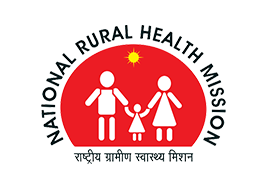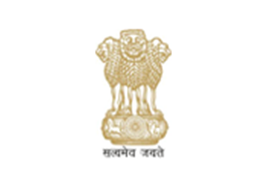WE GROW FOR A BETTER INDIA

More than half the Tribal population is sorely sustained by ‘Agriculture’, which has been a primary source of income for the population who belong to rural areas of India. And propitiously, agriculture is considered as the heart and soul of Indian economy. An outspread economic sector as 18% of country's GDP is contributed by Agriculture. India positions first and second in the world for highest net cropped areas, and farm output and productivity respectively.
For over 2000 years agriculture has been the spine of our country. But that strength has now grown feeble due to several reasons. It is our reliability to hand down the conventional custom to the next generation and to indoctrinate the auxiliary knowledge across the world. HRDS INDIA is able to illumine it eminently in Indian subcontinent. Herbal yielding is said to be the only countermeasure that has brought about by HRDS INDIA, and this is the reason behind ‘KARSHAKA’, the tribal agricultural development project. This way the Indian soil could beget crude and highly ameliorating Ayurvedic medicines, and augment the forsaken land of tribal communities in order to retrieve the bygone lives of tribal folks in Adivasi areas of Kerala..
Background of the project
HRDS INDIA has pitch upon Attappady region of Palakkad district of Kerala as the location for the implementation of the project ‘KARSHAKA’. They sniff out the reasons like uncontrolled deforestation, over-grazing, inappropriate methods of agricultural practice, etc. for choosing Attappady. All these have contributed to the indiscriminate removal of dense forest cover of this area since the second quarter of this century. However, with the influx of settlers, process of deforestation in Attappady became extensive. The new form of cultivation brought by companies and factories requires forest clearance, with which there is an increase in the procedure of clearance of trees and forest in the rural space of the country. This has led to a large scale erosion and low productivity in the occupied land of this area. Deforestation as a consequence of inappropriate forest management and unhealthy human interactions has slide down to a semi-desert within a few kilometers of the lush evergreen forests of Muthikulam and silent valley ranges. After the plundering of the forest of Attappady, severe practice of different types of cultivation is being practiced due to which there is a destruction of the forest regions. Continuous ploughing and weak terracing resulted in top soil erosion on an extensive scale.
They are least concerned about the ecological nature of the area. In the keen struggle to hold on their land and build up their resource base, tribes of this region have put all their energy into the land indiscriminately and regardless of its environmental consequences. Thus the new cultivation practices, along with deforestation,‘ intensified the process of deterioration of the fertile lands of Attappady. The extensive shift of lrulas and Mudugas towards settler type cultivation, mainly for the need of money, has created an extensive patch of denudation near their settlements, village, and fragile upper reaches. In these areas tribes began practicing cultivation of crops like tapioca and cotton, which is acutely unsuitable to the areas. For many years, the settlers have exploited the ignorance and illiteracy of tribes, and plundered their resource. Instead of leaping from this bitter experience, they are still seeking financial help from the exploiters, thus aiding and abetting the destructive process even further.
Tribal culture is cognate with tribal economy, and their economic system can be understood only within the purview of cultural factors. In the conventional wisdom of economics, economic factors like social and cultural relations are considered non-essential, though they are the tribal reality of the very organization of their economic process. The traditional tribal economy is generally based on forest and characterized by simple technology. Tribal culture and forest have been inseparable entities. Both have been inter-dependent and inter-related. Forest has played a significant role in shaping the social, economic, religious, political and cultural systems of Indian tribal societies. The system by which human resources and natural resources are governed is known as economy. The tribal economy is strictly dependent on the forest because economic institutions like production, consumption, distribution, market, trade, labour etc all is related to forest. Tribals in general and tribals in Attappady are not like general masses. Their main food items are ragi, thina, chama etc. which they cultivate through shifting cultivation. In addition to this, forest has provided them many resources for meeting their life. These items obtained from the forest plays a significant role in controlling and maintaining the health of tribals. But due to the destruction of forest and environmental degradation, they began to face shortage of these items. Lack of rain and droughts caused damage to their traditional agricultural system and as a result of this they lost their traditional food habits, which affected their health and living conditions. Hunting , Food gathering, Collection of Minor Forest Produce, Collection of fuel and fodder, Artisan activities, Shifting cultivation was the traditional economic structure of tribals in Attappady.
Tribal people have ensconced in the Attappady region, and consists particularly of unemployed women and children, who would be benefited by this venture. The main source of income of the tribal people is from unskilled native labour such as coolie Jobs. However, during the off- season, these people have to look for some other means of livelihood. Since the demand for medicinal plants is ever increasing as people are more and more fascinated towards herbs, this project will help in solving both the problems. The tribal people are directed according to the proficient guidance and they are trained in the process cultivation of medicinal plants which will be cultivated in their own lands. This will serve as a repository of medicinal plants, where farmers/ traders can come and learn growing, harvesting, grading , sowing , applying manure to the land , weeding , and skillful techniques for the growth of medicinal plants. There is a need to cultivate for larger production and authenticity. Cultivation will help in the conservation of some of the medicinal herbs that are being pushed to the danger of extinction. Cultivation of medicinal plants are not only economical but ecologically safer too.
Life of tribal women are associated with beliefs, customs, social mores, precepts, rights, and usages practiced since time immemorial, is not always conduce to the interest of women. Some of the experiences are particularly oppressive to women. Women take on themselves heavy responsibilities, and tribal customary laws like those of non-tribal societies deny them equal rights to property. Inheritance rights in most tribal societies are favourable to men in general; women are entitled only to maintenance rights and expenses for marriage, while men inherit all other movable and immovable property. Even in case of societies which follow the matrilineal pattern of inheritance, when it comes to land, a sharp distinction is made between ‘ownership’ and ‘control. While ownership of land is transmitted to women, control invariably lies with men. Tribal women face many constraints in their access to common property resources. A tribal woman occupies an important place in the socioeconomic structure of her society. Unlike in non-tribal society women are not treated as drudges or beasts of burden, they are found to be exercising a relatively free and firm hand in all aspects related to their social life. Though tribal women are away from the mainstream of national life, they are not kept away from the impact of socioeconomic changes affecting the neighborhood or society in general. ln the process of change the tribal woman whether she likes it or not, is forced to adhere to certain 18 norms which may even take away her freedom, her control over whatever primitive production factors their families possess, her control over production, her home, family and children and even her own life. The process of such alienation has an impact on the tribal woman by altering her complete life span. Her life is tagged on to her male partner as in the case of a non-tribal society. Since tribal communities have been subjected to various forms of deprivation such as alienation from the land and other forest resources, which however did not cease with the gaining of independence of the country. As part of a tribal society, she has to suffer and yet survive for the sake of her children and the community. Each tribe in a tribal community has its own distinct characteristic life patterns and lifestyles, indicating wide variations in their cultural and economic formation. Each tribal group has its own interests and unique identity and women in these groups exclusively represent such a distinct identity.
Along with poverty, high rate of illiteracy is prevalent in the society. There is a shift from traditional society to modem orientation, development processes which has neglected both women and environment, despite their hard work and honesty. The distinctive of Indian culture consists of having a defined life in the forest as the highest form of cultural evolution. Tribal economy is intimately connected with the environment. The forest regions are generally inhabited by the tribal communities, and their problems cannot be kept under veil for a longer time. The problems arise mainly from the shrinking economic base due to massive felling of trees or the degradation of nature, the employment problem of tribal inescapably had a serious impact on the well-being of their children.
ABOUT THE KARSHAKA PROJECT:
HRDS INDIA has adapted the notion of natural farming and the concept of chemical free zone through Karshaka Project which aims to cultivate 5000 Acres of Medicinal plants in Attappady. The beneficiaries of the project will be from the Members of Agriculture Development Committee of HRDS INDIA. The project will continue for a period of 35 years with the mutual understanding between the beneficiaries and HRDS INDIA. The Project will become a revolutionary action for tribal development. The regular income from the cultivation will provide an economic security for the tribal people in Attappady. The economic security will tend into bring a change in their life in all aspects.
The tribals consist of a well-knit cohesive group. They depend on forests , and live in mutual co-operation and support. This practice links them with the economic system and environment in which they live. Any change in the system will have a pervasive effect on other systems.
As a result of the destruction of the environment and increasing pressure from the village many men have to migrate to other region, which increases the workload of women. Thus, the economic status of the family particularly of women deteriorates due to the migration. Moreover, in the absence of men, women are left to fend for themselves and deal with the exploitative elements such as moneylenders, businessmen and landlords. Tribal women with low literacy are especially susceptible to this situation, leading to land alienation, cheating in weighing and pricing and sexual exploitation.
Due to environmental degradation and decline in the availability of minor forest product , the nutritional status of tribal women has been severely affected. The reduction in the extent and quality of land available for shifting cultivation, the disappearance and reduced availability of minor forest produce along with the forest have thus led to a decline in the quality and quantity of food consumed especially by those families who get little or no food grains from the private lands. While these factors would affect everyone, they have special significance for women, since they are the providers of food to the family. In their effort to cater to the needs of everyone, there is every possibility of discrimination against women and children. Thus, in food intake, deforestation affects the lower classes more than the upper classes, women more than men. Thus the developmental policies have accentuated existing inequalities and have introduced new ones, also among the tribals as they have done elsewhere in lndia.
Many factors were identified by HRDS INDIA team for this deplorable situation. Migration of people from thickly populated plain land to this thinly populated mountain slope has mount up massively. lt was followed by the introduction of different land use activities, quite different from the traditional ways of land use in this region. In the course of events, the tribals lost their lands. Demographic structure of Attappady changed, cropping pattern got diversified, traditional techniques of production were ruined, new crops and new techniques of cultivation, and the entire cost and return structure of production underwent radical change. Till the second quarter of the century, the area was inhabited only.
Displacement for development project under HRDS INDIA would prove to be a boon for the tribal communities residing in the forest. Today they have to walk much longer distances than in the past to collect food and fodder. Several development schemes have effected them thoroughly, and changed the socioeconomic and cultural life of the tribal women. Tribal women are the worst affected in the process of change. Recognition of the husband as the head of the family has created a negative impact on the status of women. Improved facilities of development like transportation, health, housing and technology have not reached the women. Women continued to work harder and have no time to enjoy the fruits of development. In the shift from traditional tribal society to the modern welfare oriented society, development processes have neglected both tribal women and forest environment. Services in the field of health, education, and environmental spheres are too inadequate to bring about any significant improvement in the social and economic life of tribal women.
TERMS AND CONDITIONS OF KARSHAKA PROJECT
As aforementioned, KARSHAKA unequivocally corroborates for those tribal farmers who own their land. Acres of land are inhered by the tribal population which is then, left unkempt and untended in the regions of Attappady. It is the responsibility of all Indian citizens to spread the merits of Ayurveda and Yoga, which was handed over into posterity from the time immemorial i.e. from the inception of Vedas, Rishis and Acharyaswhich was a dominant part of our culture. It is necessary to propagandize the concept of Yoga and Ayurveda in this era. Fortunately, from the influence of our Prime Minster Sri.NarendraModi , United Nations Organizations has initiated to spread the concerns for Yoga and Ayurveda worldwide. As a part of this, the practices of Yoga and Ayurveda are well received by people all over the world. Its fruitful impact has enriched India massively. But the problem arises when in India such ideas are hindered by these Ayurveda pharmaceutical industries. These firms are facing scarcity of raw materials from the country which has resulted in increase in the cost of Ayurvedic Medicines and Products.
To tackle this issue of cost hike in Ayurvedic Medicine and Products, HRDS INDIA is garnering an initiative - Project ‘Karshaka’, for the promotion of medicinal plants in the country. HRDS INDIA believes that it is an efficient way to address such a contesting problem.
Unfortunately, present sawbones and apothecaries failed to get organic and unprocessed medicinal components which became a well grounded reason for the physician's proposal to mulch the commoners and its inaccessibility of wholesome medicines in Indian market. This project will accelerate the availability of high quality raw materials for the Ayurvedic Product Market, and can also convert plain lands of Tribal people into Agricultural land. Through this HRDS INDIA can ensure a minimum income for the local tribes and will eventually make a noticeable change in their lives too. The Project Karshaka will also help to bring the oppressed and marginalized Tribal People into the main stream of the society. KARSHAKA' won the backing of India’s largest Ayurvedic Pharmaceutical Industries like Pathanjali, Dabur, Himalaya. HRDS INDIA solemnly asserts that this partnership which will underpin the furtherance of the tribal population and preempt the indispositions from the world.
These Tribal communities used to follow their traditional agricultural methods, but somehow this conventional ecosystem collapsed and basic convenience of their lives became deficient, undernourished and underprivileged. Moreover, different grazing land of livestock is overly grown with unwanted weeds and grasses, and the fertile topsoil is being eroded. If this situation persists, the land will be equivalent to an uninhabited land. To prevent this situation HRDS INDIA has put forth myriad farming and agricultural proposals to encourage the traditional farming that would foster the employment sector and cultivate fertile lands by crop cultivation, farming, water conservation ,herbal farming, horticulture, sericulture etc.
To revive the time-honoured ecosystem of tribal population there is a necessity to ensure and prioritize their individual rights and freedom. Presently, the landlord farmers have no capital to cultivate their land. As a solution to these circumstances, HRDS INDIA is taking the initiatives and targeting the overall furtherance of tribal groups in every area and in every manner possible. HRDS INDIA has been working for the past 22 years for the upkeep mainstream access to the marginalized society. In order to promote the socio- economic refinement of the tribal populace in Attappady, and for the execution of the project KARSHAKA under the administration of HRDS INDIA, an agreement has been duly signed and legalized by Both Parties, HRDS INDIA Agricultural Development Council and the Farmer who vested the Land for the Karshaka Project, of the agreement has given the commitment to vest carry through the project KARSHAKA, the following provisions are to be accepted by the parties for the impartation of land which are mentioned underneath.
Provisions at a glance:
- The responsibility of undertaking the project is to the Agricultural Development Council which has been formed under the leadership of HRDS INDIA.
- HRDS INDIA has all the resources needed for the cultivation in the land conceded by the tribal people for a long term lease (preparing the soil, availability of water, organic fertilizers and seeds).
- As per the agreement, the second party who is giving land to the Project Karshaka will be given 1000 rupees per acre by HRDS INDIA, at the time of signing the Agreement to meet the initial expenses.
- The essence of Natural Farming is decided to be espoused under the method of conservation of soil and water, nature conservation and food security for the generations to come.
- The Land included in any government scheme are not in any way included as a part of this Project.
- Full cash transactions including wages and reimbursement to the farmers in connection with the project will be done only through the bank account.
- 60% share of the profit from the Project generated after the expenditure of farming and other expenditure will be given to the farmer who vested the land for the project, and the rest 40% of the funds will be utilized for the re-farming expenses and other expenses.
- The contract will be promoted to encourage cattle farming for the successful implementation of the project.
- The agricultural development committee shall have full freedom to impart irrigation facilities for agricultural purposes.
- The money getting from the marketing of products after harvest will be given to the farmer directly through his BANK ACCOUNT.
- The income availed by each cultivator will depend on the size and area of the land and the type and varieties of crops cultivated on the land.
- To ensure food security and health of the tribal population, cultivation of traditional crops such as panchdanya, long term crops and horticulture for the protection of land, water, and rearing of 1001 medicinal plants in accordance with the values of Indian culture has been manifested by the organization.
- HRDS INDIA shall ensure to safeguard the tribal land and habitat and protect from any encroachment and exclusion of such land.
- The farmer will be permitte3wd to recede themselves from the project midway but they will have to give three months advance notice to the Agricultural Development Council and the Farmer must have to pay the total agricultural expenses which has to be reported to the concerned farmer in the Agricultural Development Council.
- Agricultural Development Council will be responsible to acquire the agricultural land and its development and trading of the agricultural resources.
- All the farmers who are the members of this project will be provided with a digital identity card (Smart Card) by HRDS INDIA.
- HRDS INDIA will bear all the expenses associated with the project.
- The marketing of all the products produced here will be apportioned by the Indian Tribal Agricultural Produce and Marketing co-operative society formed by HRDS INDIA. This society will be affiliated with the ‘Trifed Federation’, which is commissioned by the Government
- The Projects and other activities that are being implemented in the covenant will be under the supervision of HRDS INDIA Agricultural Development Council.
- An Agricultural Advisory Board will be formed by HRDS INDIA, including Agricultural Experts, Agricultural Scientists, M.P, M.L.A, District Collector, Sub Collector, ITDP Officer, District Panchayat President, Members and Presidents of Grama Panchayats and elected representatives among the Farmers.
- Apart from these committees, each category will have special working committees and their conveners.
- There will be no payments as rent for the land during the period or after the period of the Agreement to the Land Owner.
- A committee will be constituted by HRDS INDIA including the full membership holders of the Project (Beneficiary Committee).
- The outlandish farmers who are unspecified with the land management will be guided by the Agricultural Experts. As per the guidance and instructions given by the Agricultural Experts should be followed in the farming. The method of cultivation and the type of crop appropriate to the soil.
- As HRDS INDIA advances the main objective of promoting Non- Toxic Agriculture. All farms being a part of this project will be implemented in a full- fledged natural organic farming system.
- HRDS INDIA has pledged to makeAttappady a chemical free zone region.
- The contract for maintaining the existing value assets on agriculture will be protected.
- Agricultural jobs that are a part of this project are prioritizing the families who bequeath their lands to the project.
- As a remuneration for agricultural workers the wage will be given according to the National Rural Employment Guarantee Scheme. The wages will be transferred directly to their bank accounts.
- The Agricultural Development Committee should have full power to construct, maintain all the temporary structures and shelters (security room, motor room, office, toilets and store room) required for the smooth functioning of the project.
- All the farmers involved in this project will be ensured with free insurance aid by HRDS INDIA.
- All the temporary buildings constructed during the period of this project should be favourable to the environment.
- At the end of the term of the contract the Agricultural Development Committee shall vest all the farming and cultivation, allied items, buildings to the farmers concerned.
- It is a fine and sterling system that guarantees the land’s succession should be as per matriarchal inheritance.
- The Land Owner is responsible for maintaining the terms and conditions of the agricultural development committee without any difficulties in the value added, cultivation and marketing.
- In case of death of the owner of the land or any physical malady which may cause any hindrance in the participation in the project, then the responsibilities will be followed by their heirs.
- In the fields of agriculture, the farmers will be provided with medical facilities, drinking water, toilets, washrooms, along with gloves, footwear, hats required on the field by the Agricultural Development Council.
- After the specified time limit in the contract, the Agricultural Development Council shall give the land back to the land owner without any compensation.
- This agreement will automatically be inactive at the end of the term of the contract.
- The contract can only be renewed, and the project can be continued only with the interest of the parties concerned after the end of the contract.
- The land given for the project shall never be traded or owned by the first party in any way as the land is solely used for the agricultural purposes. The committee or organization won't entertain the usage of land for any fringe benefit.
- The agricultural development committee should submit a periodic report to HRDS INDIA which has been reviewed by the sub- committees that are constituted for the project monitoring in due course of time and which is then properly monitored and evaluated for the progress and better ways to continue the activity.
- This project by HRDS INDIA is defined according to the rules and regulations governed and enforced by the Government for the Tribal population from time to time.





















